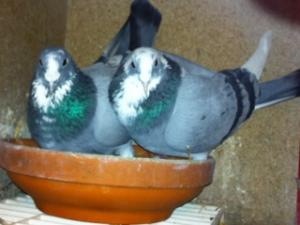-
Posts
36,109 -
Joined
-
Last visited
Content Type
Profiles
Forums
Events
Everything posted by sapper756
-
I've applied for the England manager's job. I know I won't get it, but it keeps the dole people off my back for another couple of weeks. My mate made the mistake of applying for the Wolves job. He's got to go for an interview on Monday.http://forum.pigeonbasics.org/public/style_emoticons/default/emoticon-0138-thinking.gif
-
fine, thankshttp://forum.pigeonbasics.org/public/style_emoticons/default/animatedpigeons.gif
-
GOOD MORNING FOLKS, HOW ARE YOU ALL TODAY?http://forum.pigeonbasics.org/public/style_emoticons/default/animatedpigeons.gif
-
WELCOME TO BASICS http://forum.pigeonbasics.org/public/style_emoticons/default/animatedpigeons.gif billie's dad http://forum.pigeonbasics.org/public/style_images/master/user_popup.png Joined on Yesterday, 19:18 PM
-
happy birthday folks http://forum.pigeonbasics.org/public/style_emoticons/default/animatedpigeons.gif kev01293 (51), david_allecia1523@hotmail. (41)
-
Today in Fife Today | Tomorrow | 10 Day | Monthly | Seasonal Current Conditions http://i.uk.imwx.com/global/images/spacer.gifhttp://forum.pigeonbasics.org/public/style_emoticons/default/animatedpigeons.gifCurrent Timehttp://i.uk.imwx.com/global/images/93x93/26.png10°CFeels Like 7°C Cloudy Last Updated: 06:25 23 Feb (local time), 06:25 GMT Observation Station: Fife NessWind From West at 27 kmph Humidity 90% Pressure 1,010.16 mb Dew Point 8°C Visibility 11.3 km What's Next Weekend Forecast Today's Outlook http://i.uk.imwx.com/global/images/spacer.gifMoon Phases Today's Forecast http://i.uk.imwx.com/global/images/61x61/28.pngHigh 12° Sunrise: 07:19 Chance of Precip. 20% Mostly Cloudy Tonight's Forecast http://i.uk.imwx.com/global/images/61x61/29.pngLow 6° Sunset: 17:30 Chance of Precip. 20% Partly Cloudy
-
Have any of you made any changes or alterations to your lofts, in preparation for the forth coming season? If so, what have you done? and why have you felt it necessary? Thank you and good luckhttp://forum.pigeonbasics.org/public/style_emoticons/default/animatedpigeons.gif
-
WELCOME FOLKS TO PIGEON BASICS http://forum.pigeonbasics.org/public/style_emoticons/default/animatedpigeons.gif KMCK http://forum.pigeonbasics.org/public/style_images/master/user_popup.png Joined on Today, 17:25 PM martynmagee http://forum.pigeonbasics.org/public/style_images/master/user_popup.png Joined on Today, 16:26 PM
-
lot 5 £50 please >>>> Done Thanks Ian
-

A Few Photos Of The Set Up And Young Uns
sapper756 replied to The White Rapido Man's topic in Members Photos
Very nice team of birds m8, my pick would be this one http://forum.pigeonbasics.org/uploads/monthly_02_2012/post-1573-13298631535529_thumb.jpg -
GOOD MORNING TO BASICS MEMBERS, WOT YER PLANS 4 2 DAY?http://forum.pigeonbasics.org/public/style_emoticons/default/animatedpigeons.gif
-
Turpentine v Holly water A little boy was sitting on the footpath with a bottle of Turpentine... He was shaking it up and watching all the bubbles. A Vicar came along and asked the little boy what he had.. The little boy said, 'This is the most powerful liquid in the world; it's called Turpentine.' The Vicar said, 'No, the most powerful liquid in the world is Holy Water. If you rub it on a pregnant woman's belly, she'll pass a healthy baby.' The little boy replied, 'If you rub turpentine on a cat's ar$e, he'll pass a Harley Davidson. 'http://forum.pigeonbasics.org/public/style_emoticons/default/emoticon-0136-giggle.gifhttp://forum.pigeonbasics.org/public/style_emoticons/default/emoticon-0136-giggle.gifhttp://forum.pigeonbasics.org/public/style_emoticons/default/emoticon-0136-giggle.gif
-
MANY HAPPY RETURNS FOLKS http://forum.pigeonbasics.org/public/style_emoticons/default/animatedpigeons.gif Williedoo (57), Thunder Birds (34), Blue Tooner (43), hotrod (48), jimmy fulton(48)
-
Today in Fife Today | Tomorrow | 10 Day | Monthly | Seasonal Severe Weather Alarms High disruption due to rainhttp://i.uk.imwx.com/global/images/spacer.gifhttp://i.uk.imwx.com/global/images/icon_ww_arrowRight.gif Current Conditions http://i.uk.imwx.com/global/images/spacer.gifCurrent Timehttp://i.uk.imwx.com/global/images/93x93/26.png9°CFeels Like 6°C Cloudy / Windy Last Updated: 06:45 22 Feb (local time), 06:45 GMT Observation Station: Fife NessWind From Southwest at 37 kmph Humidity 89% Pressure 1,006.1 mb Dew Point 8°C Visibility 16.1 km What's Next Ash Wednesday Today's Outlook http://i.uk.imwx.com/global/images/spacer.gifMoon Phases Today's Forecast http://i.uk.imwx.com/global/images/61x61/11.pngHigh 12° Sunrise: 07:22 Chance of Precip. 90% AM Light Rain / Wind Tonight's Forecast http://i.uk.imwx.com/global/images/61x61/45.pngLow 8° Sunset: 17:28 Chance of Precip. 30% Showers Late
-
NAPOLI v CHELSEA any predoctions folks?
-
mon the Raith & Hoopshttp://forum.pigeonbasics.org/public/style_emoticons/default/emoticon-0137-clapping.gif
-
-
http://a6.sphotos.ak.fbcdn.net/hphotos-ak-ash4/426576_10150697063194187_557044186_11158110_222756299_n.jpghttp://forum.pigeonbasics.org/public/style_emoticons/default/emoticon-0136-giggle.gifhttp://forum.pigeonbasics.org/public/style_emoticons/default/emoticon-0136-giggle.gifhttp://forum.pigeonbasics.org/public/style_emoticons/default/emoticon-0136-giggle.gif
-
WELCOME TO BASICS DearPigeon http://forum.pigeonbasics.org/public/style_images/master/user_popup.png Joined on Yesterday, 19:28 PMhttp://forum.pigeonbasics.org/public/style_emoticons/default/animatedpigeons.gif
-
GOOD MORNING FOLKS! ARE YOU DOING ANY THING EXCITING TODAY?http://forum.pigeonbasics.org/public/style_emoticons/default/animatedpigeons.gif
-
MANY HAPPY RETURNS dannymitch (29) http://forum.pigeonbasics.org/public/style_emoticons/default/animatedpigeons.gif
-
Today in Fife Today | Tomorrow | 10 Day | Monthly | Seasonal Current Conditions http://i.uk.imwx.com/global/images/spacer.gifCurrent Timehttp://i.uk.imwx.com/global/images/93x93/27.png9°CFeels Like 5°C Mostly Cloudy / Windy Last Updated: 06:45 21 Feb (local time), 06:45 GMT Observation Station: Fife NessWind From West South West at 35 kmph Humidity 90% Pressure 1,015.58 mb Dew Point 8°C Visibility 16.1 km What's Next Shrove Tuesday (Pancake Day) Today's Outlook http://i.uk.imwx.com/global/images/spacer.gifMoon Phases Today's Forecast http://i.uk.imwx.com/global/images/61x61/28.pngHigh 11° Sunrise: 07:24 Chance of Precip. 10% Mostly Cloudy Tonight's Forecast http://i.uk.imwx.com/global/images/61x61/11.pngLow 8° Sunset: 17:25 Chance of Precip. 40% Light Rain
-
http://a2.sphotos.ak.fbcdn.net/hphotos-ak-ash4/s320x320/405482_236152536474140_100002381857856_473994_2022164096_n.jpg
-
http://a3.sphotos.ak.fbcdn.net/hphotos-ak-snc7/s320x320/419231_2635756537364_1358987502_32037739_242190656_n.jpg
-
http://a8.sphotos.ak.fbcdn.net/hphotos-ak-snc7/s320x320/426897_365602796791602_288689104482972_1354500_1973990822_n.jpg



